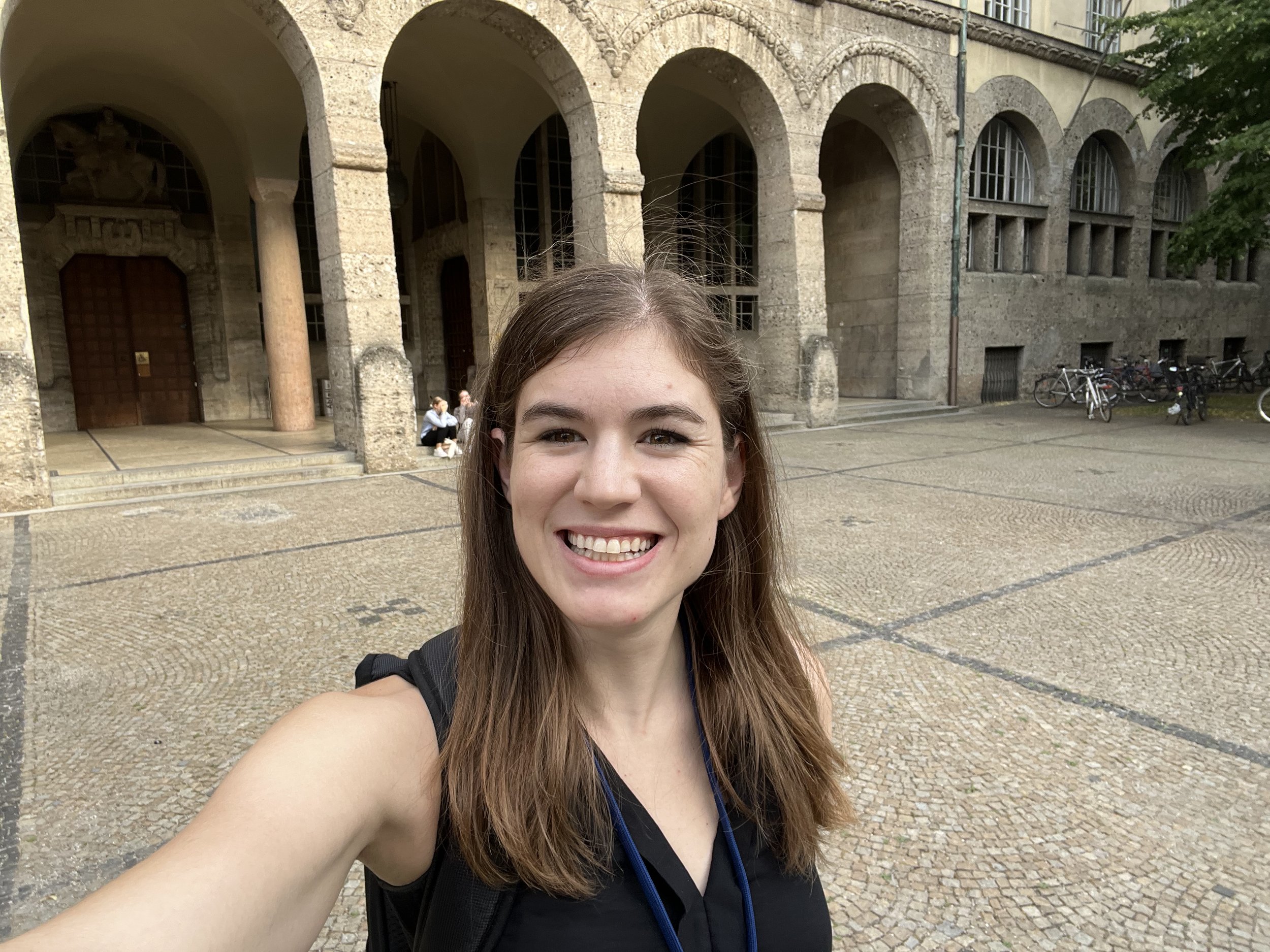Hybrid Human-AI Conference: Day 2 of Summer in Munich
The beautiful main hall of Ludwig Maximilians University, where our event reception will be held tomorrow night
When I describe Abhishek’s and my work on augmented collective intelligence, often, people perceive it as exciting but very niche. But upon a closer look, our topic contains multitudes - more to study than anyone could do in a lifetime. How do human teams work together? How do they decide? What is artificial intelligence, and what kind of capabilities are available? What capabilities might be available soon? What happens when we make hybrid human-AI teams -- to the problem being solved, our sense of purpose and autonomy, our organizations, society, and our career paths? All of these are unskippable questions. And that, in a nutshell, is why it's so important to team up with other researchers across disciplines - which is why I've flown to Munich to participate in HHAI 2023.
Perfect weather in Munich to serve as a backdrop for intellectual conversations.
Three Key Learnings
Principles for effective interface design
Last week, we discussed the importance of interface design to build trust and facilitate effective communication between humans and AIs in hybrid teams. Today, we dove deeper and asked, what are the principles of effective interface design? The most important thing to communicate is intent – translating tacit and implicit signals so that the humans and AIs can estimate what the other is trying to accomplish. To trust someone, we need to feel confident that we (correctly) understand their intentions towards us and the task at hand!
Jan Leusmann explaining how his experiment begins tackling the question of intent through communicating body language
The importance of interface design
How to design the interface depends, in part, on when you are creating it. Are you building it for an existing model, or will the model be tailored to your interface? If both are being developed in parallel, are designers part of the full process or relegated to specific tasks? As always, the best design results from the tightest integration into the project - something my colleagues at BCG BrightHouse know well.
Top-notch culinary design work at a Vietnamese sidewalk cafe in Munich.
Staying in control
From my previous work, I've seen how important a subjective sense of control is to human health and well-being. As it turns out, control is also critical to decision-making. Emily Caspar's team in France studied holocaust participants to understand the relationship between authority and decision-making – and found that when people feel out of control, they are more susceptible to making poor decisions. Humans must maintain a sense of control for human-AI hybrid teams to make good decisions. Every time we increase the role and power of the AI, we must increase the feedback we’re giving it (and that it recognizes from us).
Three Humans of HHAI
Bruno Berberian studies cognitive mechanisms in controlling complex systems for ONERA, a French aerospace lab that works closely with NASA. He has spent the past ten years studying human movement science (how we control our actions) and its implications for joint decision-making, authority, and collaboration with automated tools.
Tina Mioch is a computer scientist and human-AI interaction researcher providing decision support to fire departments and first responders. In this field, image recognition systems are being used to improve response time and quality of service, but it takes time to design them to fit the task. Tina's work reveals user preferences and supports trust and accountability by improving the systems' interface design.
Maximiliane Windl and her colleague Albrecht Schmidt are studying pragmatic approaches to interface design (and their work inspired the insights above) at the Munich Center for Machine Learning.
Two Lab Demos I enjoyed
Jan Leusmann’s demo took an interesting approach to communicating intent between people and robots. In his experiment, human subjects are given a movement prompt, like "learning how to use a computer keyboard," and then asked to teach a 6-DOF robot arm how to mimic that movement. He hopes to discover commonalities in the ways humans interpret specific motions, which can contribute to improved "body language" communication in hybrid human-robot teams.
Jan’s two robot demos, of which the one on the left is the one we worked with today.
Bettina Eska had perhaps the coolest demo of the day. This wearable motor learning model uses machine learning to provide real-time feedback to humans on their basketball shooting technique by mapping the angles of our arms and shoulders. Her work could have significant implications for industries requiring motor precision, from agriculture to the arts.
Action shot of me missing yet another shot at the target - but getting valuable feedback!
Looking forward to tomorrow …
Tomorrow is the first full day of poster sessions, where all attendees can learn in one place. I plan to dig deeper into this idea of meaningful human control in human-AI teams and explore pragmatic ways to test it in my organization.





